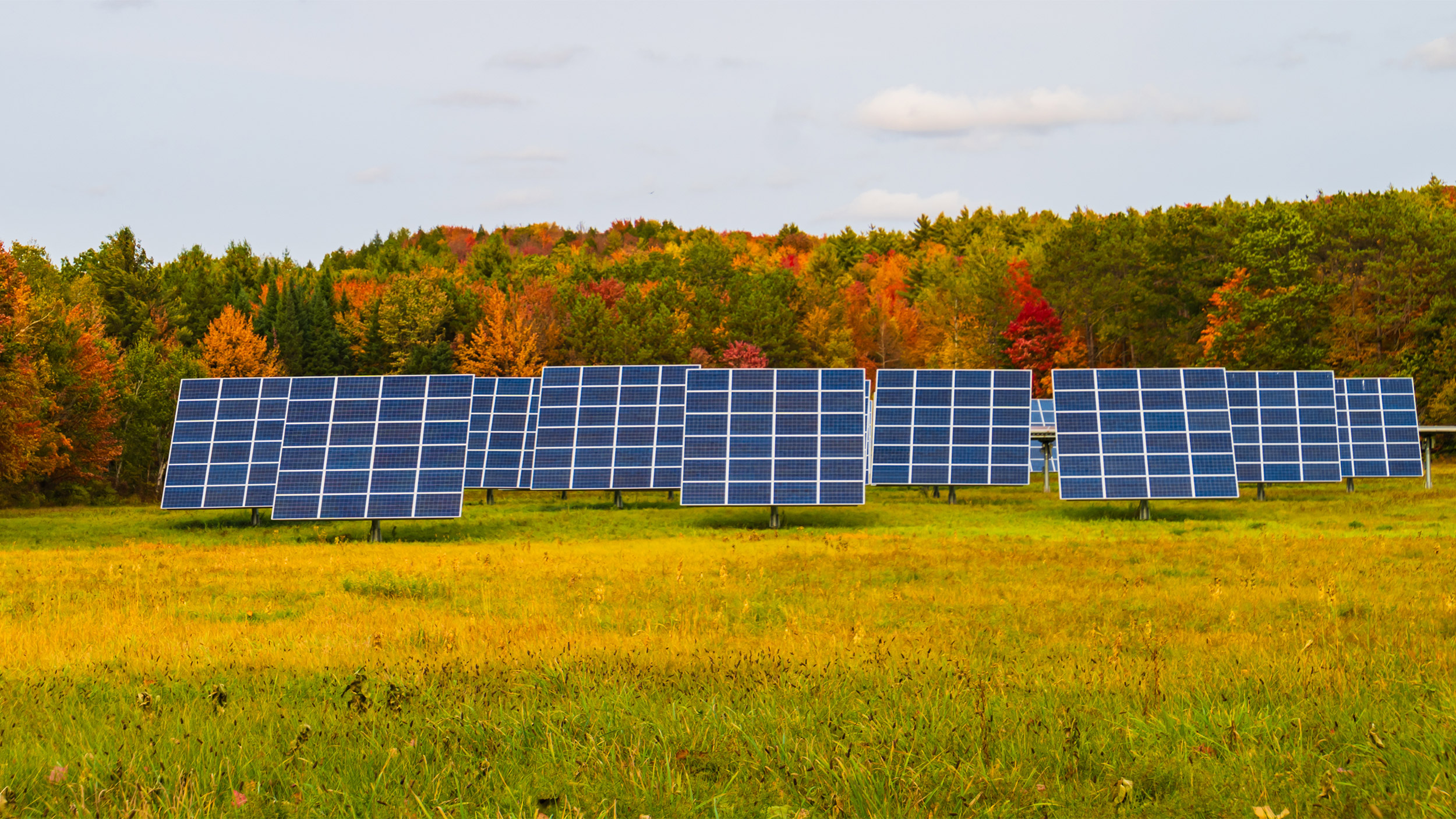
More solar energy needed, but clearing forests for panels may not be way to do it
Harvard-led analysis suggests incentives to save carbon-absorbing trees, siting projects on rooftops, developed areas
Evidence of the clean-energy transition abounds, with solar panels dotting rooftops, parking lots, and open spaces. In Massachusetts, future proliferation of these sunlight-soaking cells will be a high priority: About five times more solar energy will be needed to reach the state’s goal of net-zero greenhouse gas emissions by 2050.
But at what cost? Harvard Forest researchers have co-authored a landmark report detailing how many projects have required the clearing of carbon-absorbing forested areas, unnecessarily harming nature as well as undercutting environmental progress. The report, written with Mass Audubon, says stronger land-use and incentive policies would allow a smoother transition to clean energy sources without sacrificing more forests and farmlands.
“Growing Solar, Protecting Nature” was co-authored by Jonathan Thompson, research director at the Harvard Forest, a 4,000-acre natural laboratory that houses research and education in forest biology, ecology, and conservation. In their analysis, Thompson and collaborator Michelle Manion of Mass Audubon outline scenarios and recommendations for smart, sustainable solar development in Massachusetts.
“We found that we can achieve the commonwealth’s clean energy targets with very little impact on natural and working lands,” said Thompson, whose team specializes in geospatial analysis and land-use impacts to forest ecosystems. Over the past year, Thompson led the land-use and carbon modeling that portrayed different future solar impacts across the state under different scenarios. The team worked closely with Evolved Energy Research, which provided energy and economic consulting.
Since 2010, more than 500 ground-mount solar projects have been developed across the state, covering 8,000 acres, of which about 60 percent are forest acres, according to the report. This illustrates a terrible irony: Deploying solar often means cutting back on tree cover and losing the climate change mitigation it provides through pulling carbon dioxide from the air, storing the carbon, and releasing oxygen into the atmosphere.
As the authors make clear, clean energy sources aren’t enough to meet climate goals. Removing carbon from the atmosphere is just as important, and Massachusetts’ famously abundant forests are a primary means to that end. Beyond the beautiful green canopies they provide, forests are a critical, natural carbon sink, and the clean energy transition can’t happen without them.
“We need to think not only about how many acres we’re using for solar development, but also which acres are being developed,” Thompson said. “Our core forests are incredibly valuable for wildlife habitat, biodiversity, and carbon storage, and we must do everything we can to protect them from further fragmentation.”
By shifting from large, ground-mount solar to more projects on rooftops, parking lots, and already-developed lands, Massachusetts can head off further, unnecessary damage to forests and farmlands while also meeting net-zero emission goals, the report states.
State policymakers expressed support for the new report’s findings. “‘Growing Solar, Protecting Nature’ provides a clear-eyed analysis of the impacts of the commonwealth’s solar policy to date and provides a roadmap for better aligning our goals of rapidly transitioning away from fossil fuels, protecting our forests that help to draw down carbon, and protecting biodiversity,” said Massachusetts climate chief Melissa Hoffer. “The joint crises of climate and biodiversity loss require fresh thinking, and this report offers just that.”
Key policy recommendations include:
- Eliminating Solar Massachusetts Renewable Target (SMART) incentives for projects sited on core habit and critical natural landscapes while increasing incentives for solar on rooftops and developed lands.
- Investing in approaches that will reduce costs of rooftop and canopy solar projects.
- Prioritizing solar with the lowest impacts to nature.
- Supporting governmental, institutional, commercial, and industrial landowners in building solar near existing transmission infrastructure to reduce costs of energy distribution.
- Launching a statewide planning effort to integrate clean energy and transmission infrastructure into the process of land development.
- Funding permanent protection of Massachusetts’ highest-value natural and working lands.
“One of the goals of this work is to broaden how we think about the costs and benefits of the clean energy transition and what we need to fight climate change,” said Manion, Mass Audubon’s vice president for policy and advocacy. “Our results are clear: When we place real value on nature’s contribution to the fight against climate change and protection of biodiversity, the path forward with the lowest costs is the one that solves for both clean energy and nature. And it’s right in front of us.”





